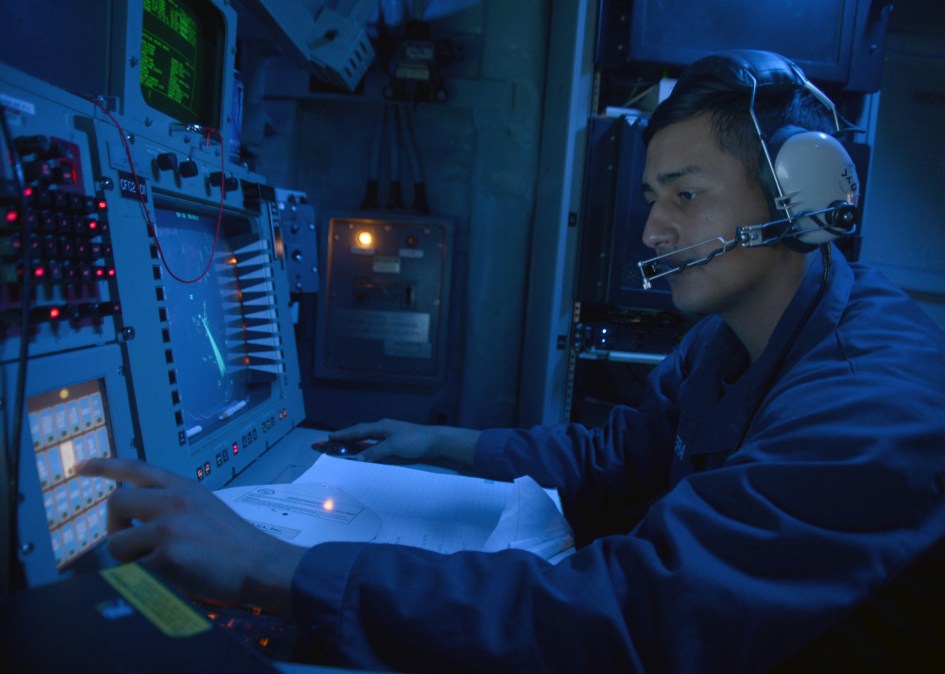Secretive nature of spectrum ops could complicate deterrence

SAN DIEGO, Calif. — Deterrence against adversaries’ use of capabilities within the electromagnetic spectrum could be difficult to assess given the secretive nature of the environment and the desire to mask high-end jamming tools and waveforms from the enemy, according to a recently retired flag officer.
“The electromagnetic spectrum, radio frequency, is going to be on fire should we go to combat. The deterrence of what we have versus what they have, it’s going to be hard to measure,” Jeffrey Trussler said at the annual WEST conference.
Trussler retired three months ago from the Navy, having served most recently as the deputy chief of naval operations for information warfare, N2/N6 and director of naval intelligence, which provided him fresh insights.
The electromagnetic spectrum has grown in strategic importance in recent years. Nations such as China and Russia have observed how much the U.S. military depends on it for precision-guided munitions, navigation and communication, and they have sought capabilities to deny access to it.
Trussler said the nature of the spectrum makes it hard for U.S. forces to put their own capabilities through their paces.
“It’s hard for us to test. It’s hard for us to demonstrate to ourselves because once you reveal capability, then the adversary can start working towards it. That, both in the cyber world and then the electromagnetic spectrum, that is very difficult to develop your capability, demonstrate it to yourselves that you can use it without revealing yourself,” he said.
In the cat-and-mouse game of EW and electromagnetic spectrum operations — where adversaries seek to deny access to the spectrum for communications or navigation through jamming — it is essential that forces protect their most sensitive signals, known as war reserve modes, which are essentially the code, signals and waveforms for use only when a conflict breaks out so enemies can’t develop remedies ahead of time. Once those are used or emitted, even in training, adversaries can collect them and develop countermeasures.
Trussler also hit on an issue he has been beating the drum on for years: preserving a key band of the spectrum for Defense Department use.
In what Trussler referred to as a “21st century, first-world problem,” there has been a push to auction off and share critical portions of the spectrum for commercial use, particularly for 5G. The spectrum is finite and portions or “bands” of the spectrum must be allocated for certain uses.
The 3.1-3.45 GHz band is currently used by the U.S. military and reserved for some of its most important radar capabilities.
Trussler described this portion where some “prime” systems have been developed and operated.
It is “the sweet spot of a lot of systems of multiple services where there is decades of work and billions of dollars of radar systems invested,” he said at a conference in 2022. “Not something that just technology, we’re just going to put a card on there, you’re going to shift a little bit and it’ll be good. That’s not going to be the case. We have a legacy, couple hundred ships and submarine Navy, thousands of aircraft systems, many systems that soldiers enable for battalions and brigades to communicate and our weapon systems.”
Trussler, others in the military, and even many in Congress, have warned against sharing this portion.
“In this decade of decision, a decade that we’re really concerned about conflict with China, we’re doing a lot of things as a whole of government that make it challenging for the department to get ready for that potential all-domain consequence,” he said. “To all of a sudden turn around and say we can share it or we can give up a little bit, you don’t use it all that much anyway — that’s the area where we train, test [and] demonstrate to ourselves our critical capability.”






